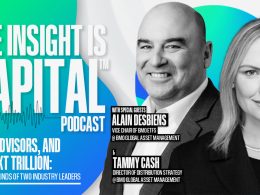by Mawer Investment Management, via The Art of Boring Blog
Falsification—the very essence of science—is a process of refutation. While we cannot prove a hypothesis to be categorically true1, we can attempt to invalidate it. Only when a hypothesis overcomes our attempts to reject it, should it be allowed to stand; conversely, refuted ideas can and should be thrown away.
The above idea is at the heart of the philosophy of science. I first encountered it in university in the writings of Karl Popper and Bertrand Russell, and subsequently treated it as indisputable. Of course we should reject ideas when the evidence says otherwise. And yet, the longer that I’ve worked within investing, the more patient I’ve become with hypotheses. Like getting asked to the school dance for the first time in high school, you don’t always want to be hasty in your rejections of an idea. Case in point? Copernicus.
In 1543, a book was published with a groundbreaking idea: what if the Earth was NOT the centre of the universe? Written by astronomer, Nicolaus Copernicus, De revolutionibus orbium coelstium proposed that the Earth orbited the sun. This wildly controversial idea sparked what is today known as the Copernican Revolution.
The Copernican Revolution was significant, not only because Copernicus was (mostly) right, but also because of what it teaches us about hypotheses: sometimes we should be patient with them. As Massimo Pigliucci explains in this episode of the Philosophy Bites podcast, the early evidence for Copernicus’ theories was weak. In fact, when Copernicus first published his book, his heliocentric model was just as bad as the prevailing Ptolemaic model at predicting the movement of the planets (both made decidedly unimpressive predictions). Copernicus’ model had some serious holes in it—like the assumption the orbits of the planets follow circular trajectories, instead of oval ones— that needed soldering before the theory could withstand scrutiny. But eventually the kinks got sorted out.
It only took 70 years.
How on earth does this relate to investing?
Let’s suppose you have (a) found what you believe is an asset bubble and (b) happen to own a bank potentially exposed to that bubble. Although you suspect the bubble exists, you notice that the bank released its quarterly financial statements and they all look healthy. Would one healthy earnings release be enough evidence to declare there is no asset bubble? Of course not.
Short sellers like Michael Burry experienced this in the 2007/2008 U.S. sub-prime mortgage crisis (you may remember Michael Lewis’ 2015 film The Big Short chronicling his story). Burry was an asset manager who had investigated thousands of the loans that underpinned a number of sub-prime mortgage bonds. His investigation led him to conclude that many of the loans were of much poorer quality than what their ratings and prices reflected, and that the subprime mortgage market was a house of cards. His assessment was accurate. It took years, however, for his thesis to play out.
It’s a good thing that Burry didn’t just look at the stock of mortgage initiators—which contradicted his thesis—in 2005 and go home. Had he done so, he would have wrongly dismissed a hypothesis that turned out to be true.
Clearly, falsification is the proper intellectual framework for evaluating ideas: it should underpin our reasoning in investing as it does in science. In practice, however, it can be hard to design tests that are adequate to entirely discard an idea. This is particularly true in investing, where we don’t always have access to the information we want and causal links can be fuzzy. We need to be careful not to quickly dismiss ideas just because one card comes up.
So, remember Copernicus: it took more than 70 years and the work of Johannes Kepler and Galileo Galilei to cement the Copernican Revolution; years for Burry’s assessment to play out. Evidence usually accumulates. Better to be skeptical than intellectually hasty.
1 As Karl Popper famously stated, “No number of sightings of white swans can prove the theory that all swans are white. The sighting of just one black one may disprove it.”
This post was originally published at Mawer Investment Management














